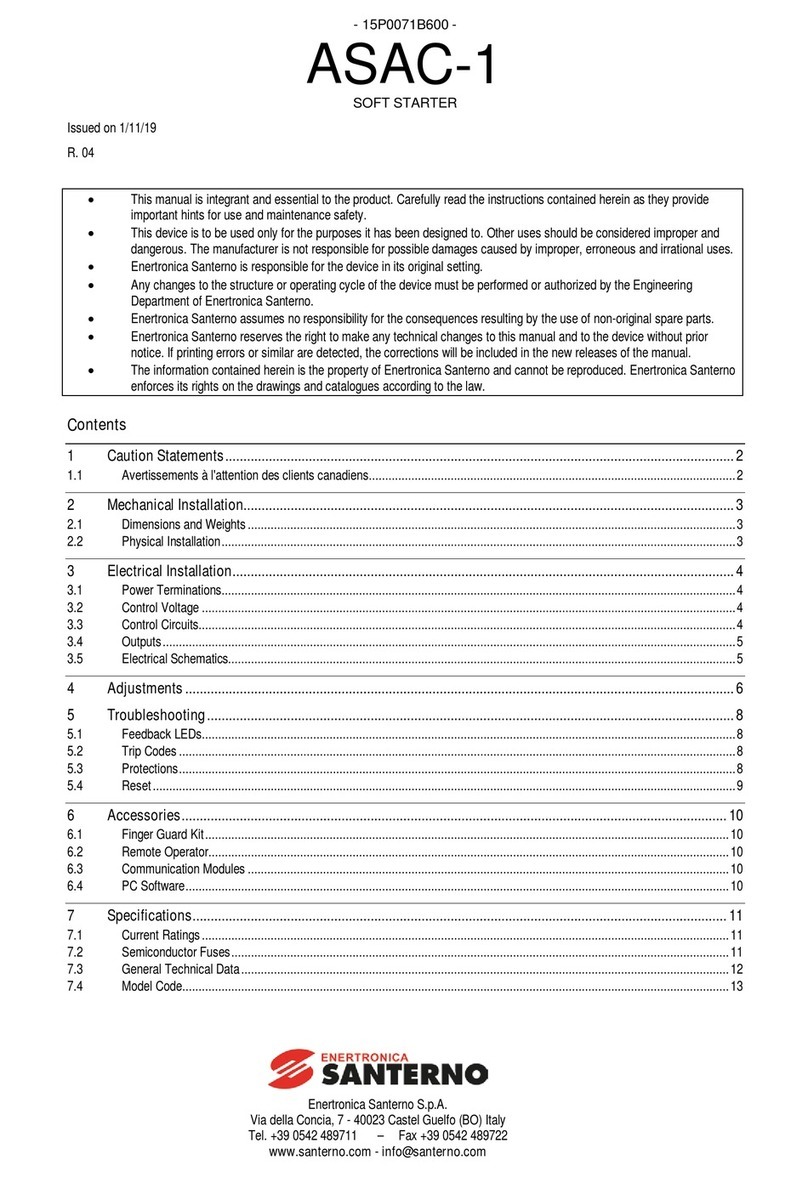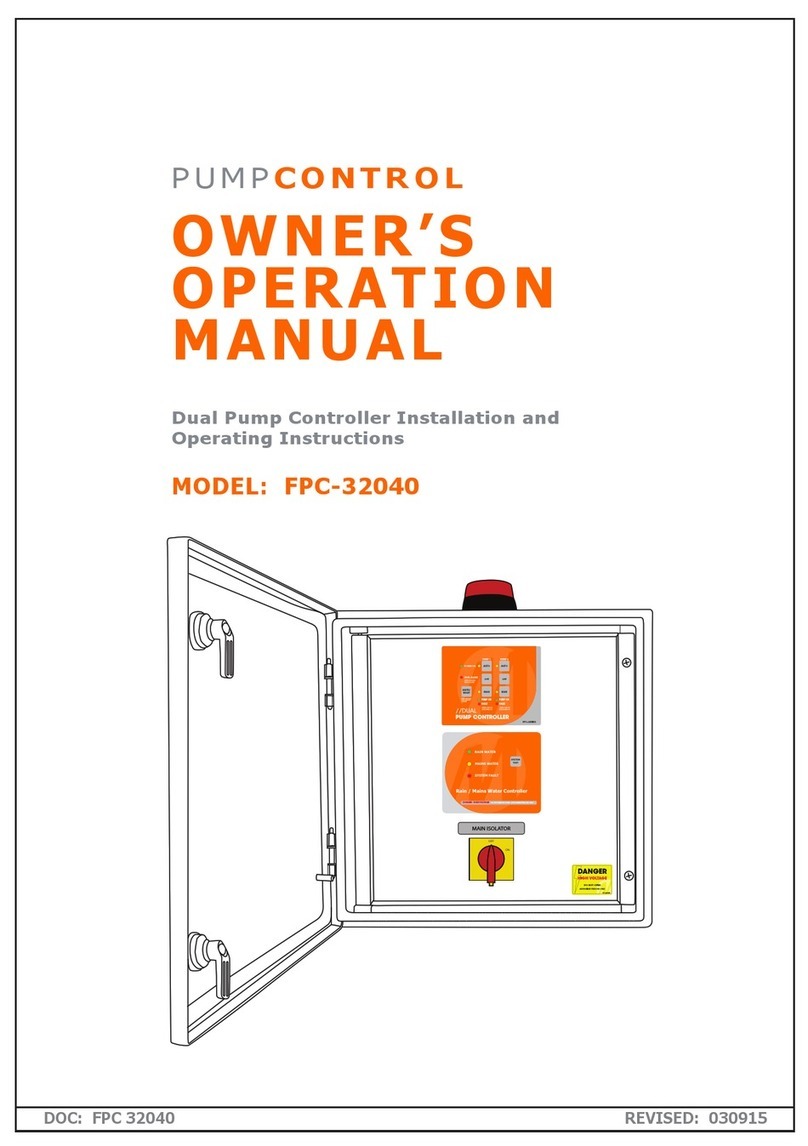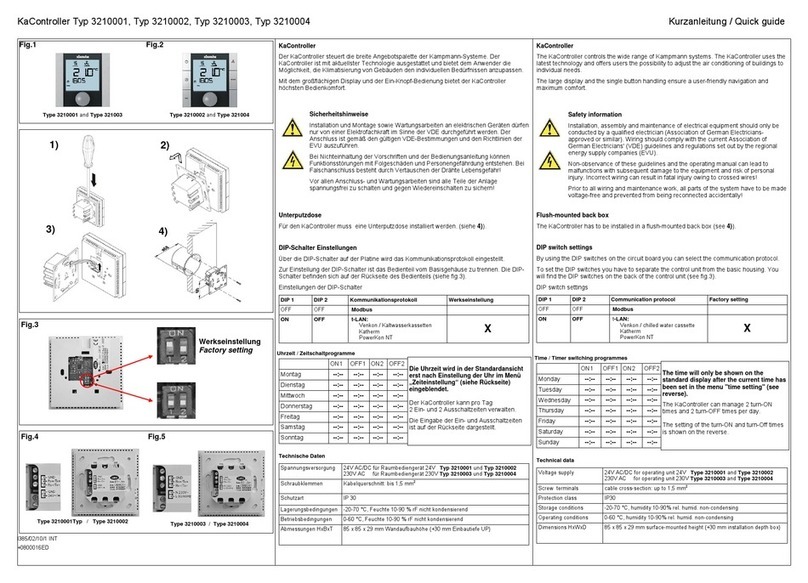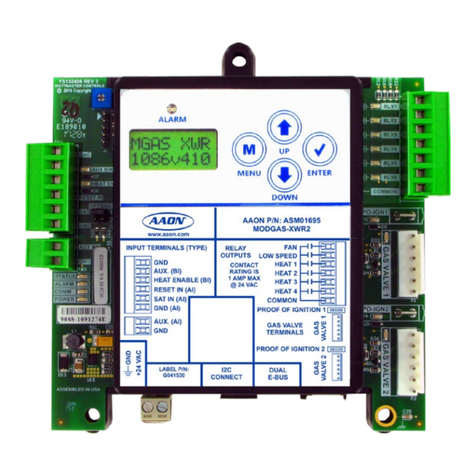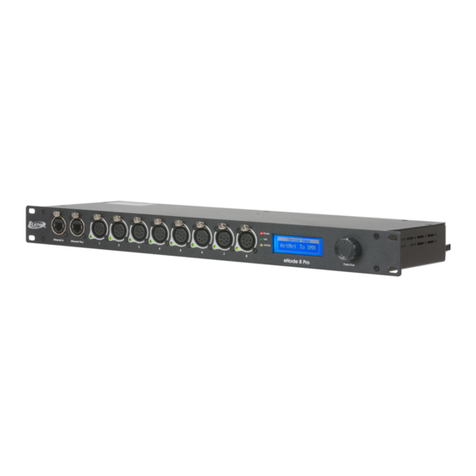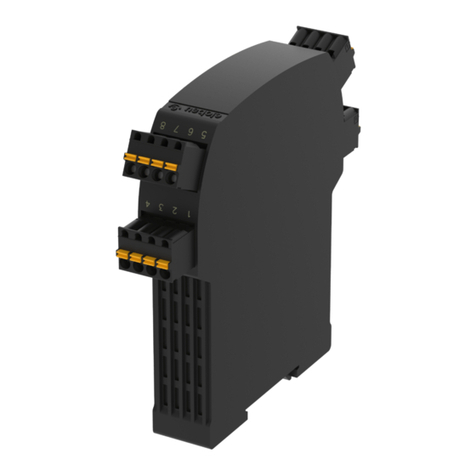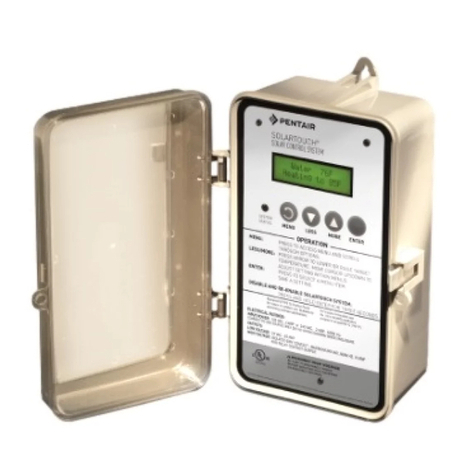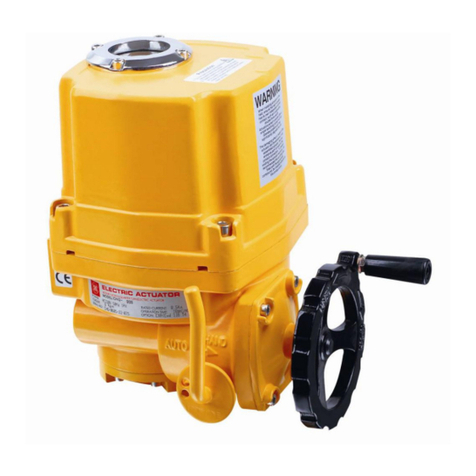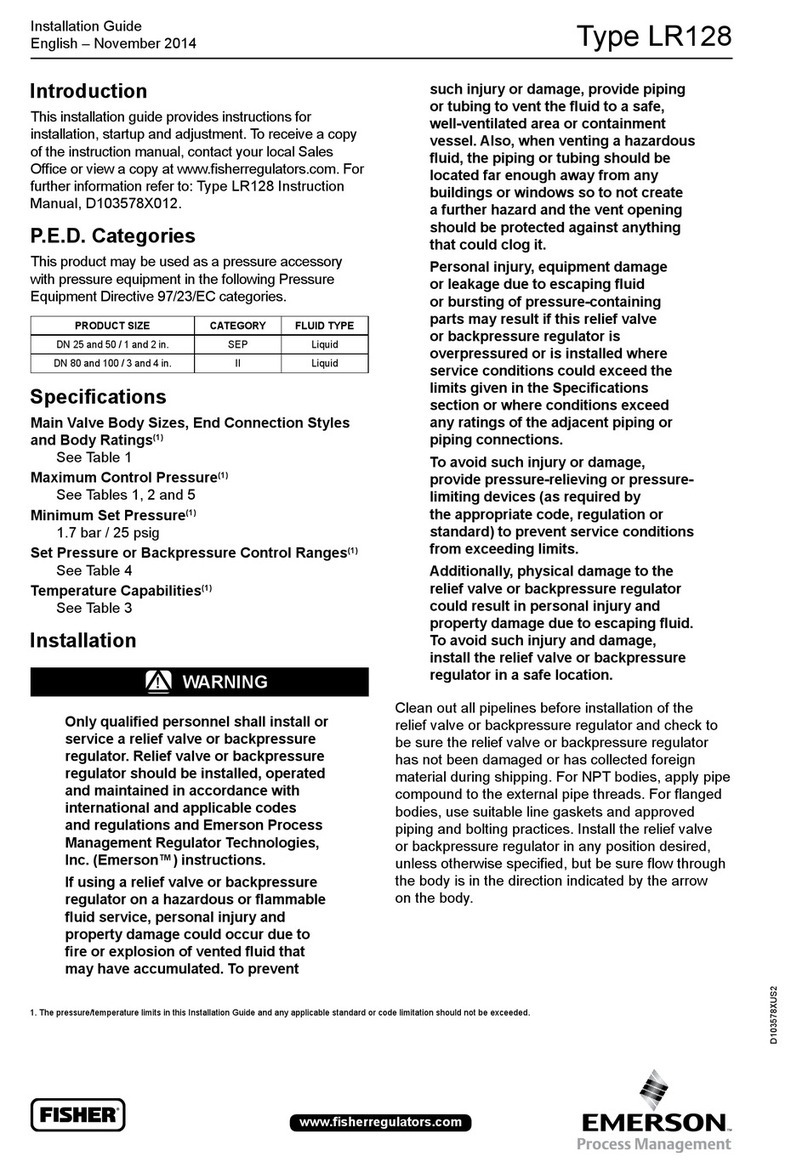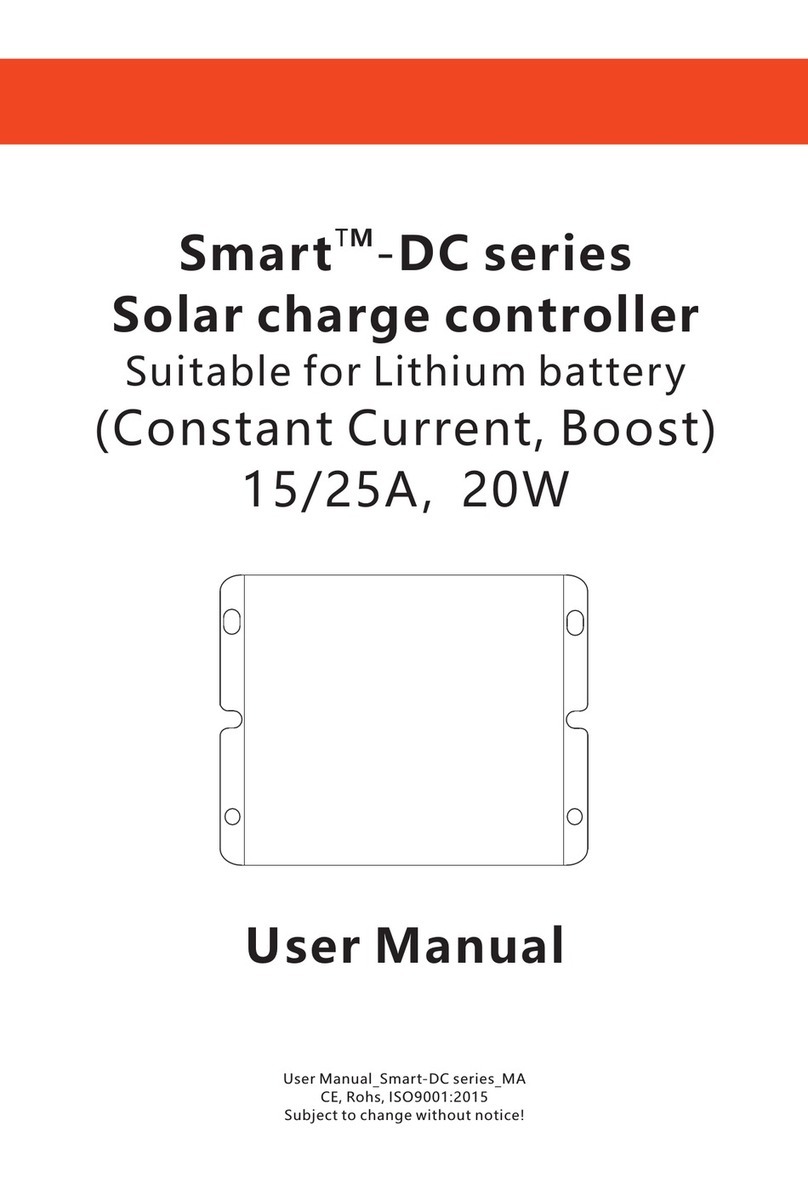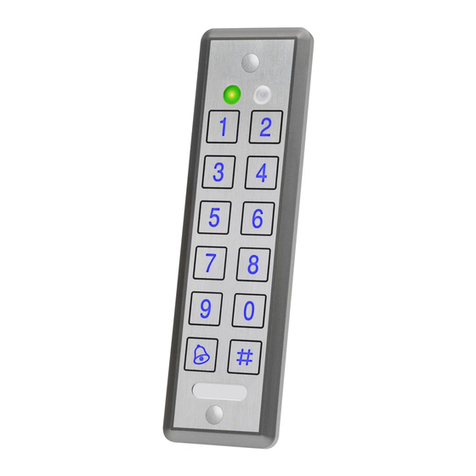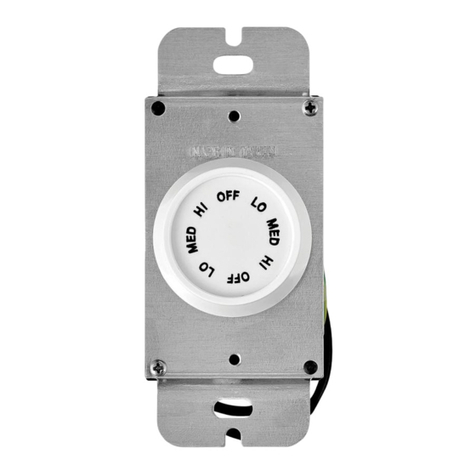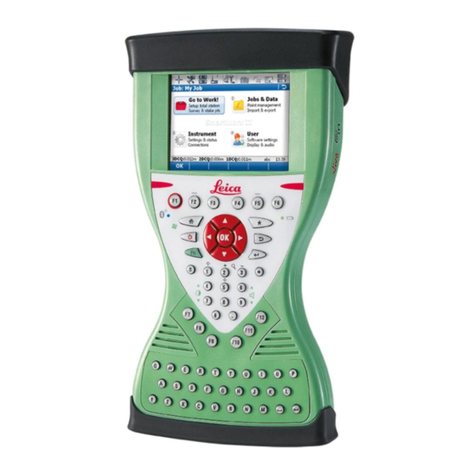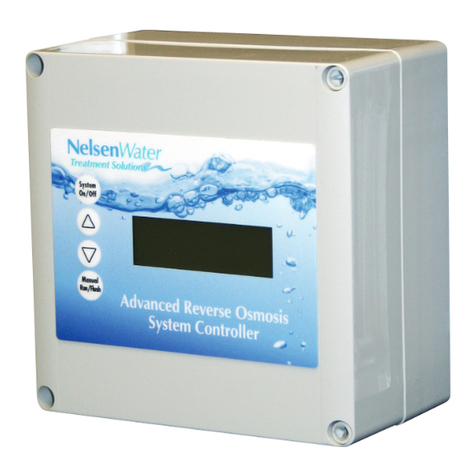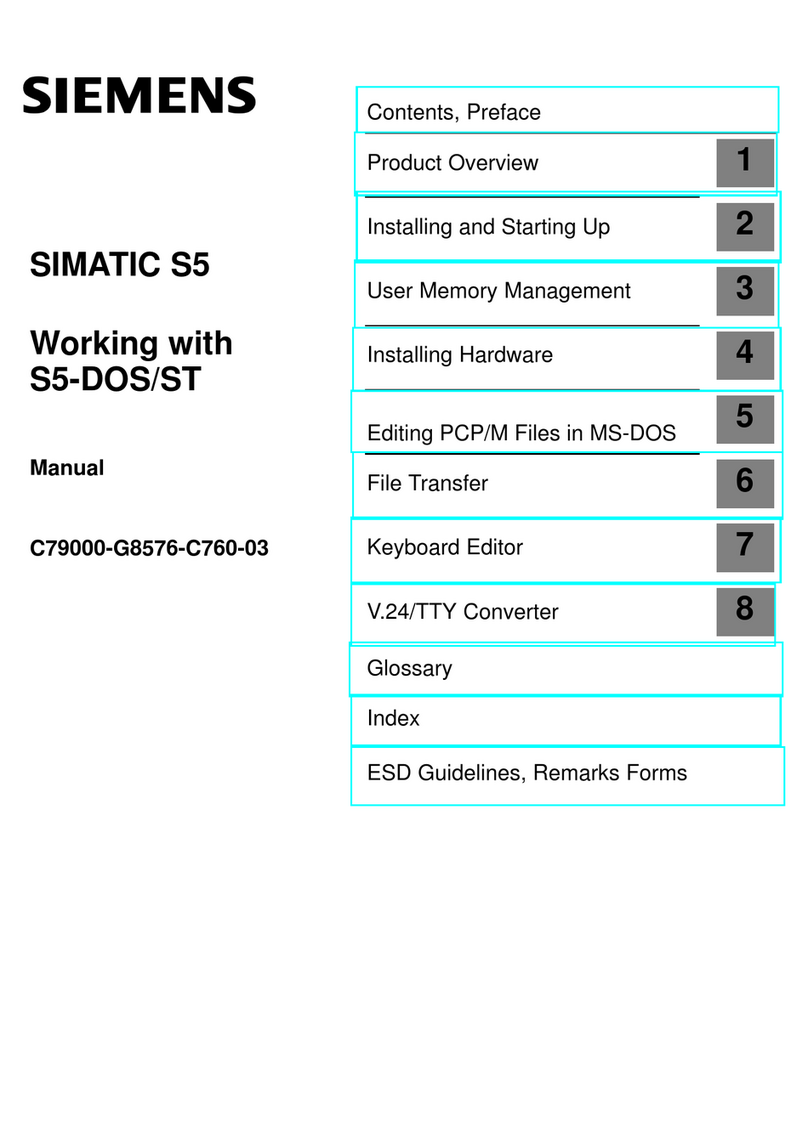Enertronica Santerno ASA 4.0 Basic User manual

Enertronica Santerno S.p.A.
Via della Concia, 7 - 40023 Castel Guelfo (BO) Italy
Tel. +39 0542 489711 – Fax +39 0542 489722
www.santerno.com - info@santerno.com
- 15P0092B100 -
ASA 4.0 Basic
SOFT STARTER
User Manual
Issued on 01/08/2020
R. 02
•This manual is integrant and essential to the product. Carefully read the instructions contained herein as they provide important
hints for use and maintenance safety.
•This device is to be used only for the purposes it has been designed to. Other uses should be considered improper and
dangerous. The manufacturer is not responsible for possible damages caused by improper, erroneous and irrational uses.
•Enertronica Santerno is responsible for the device in its original setting.
•Any changes to the structure or operating cycle of the device must be performed or authorized by the Engineering Department
of Enertronica Santerno.
•Enertronica Santerno assumes no responsibility for the consequences resulting by the use of non-original spare parts.
•Enertronica Santerno reserves the right to make any technical changes to this manual and to the device without prior notice. If
printing errors or similar are detected, the corrections will be included in the new releases of the manual.
•The information contained herein is the property of Enertronica Santerno and cannot be reproduced. Enertronica Santerno
enforces its rights on the drawings and catalogues according to the law.

2/58
ASA 4.0 Basic
Contents
1About This Manual.....................................................................................................................................................4
1.1 Disclaimer......................................................................................................................................................................................4
2Caution Statements....................................................................................................................................................5
2.1 Electrical shock risk.......................................................................................................................................................................5
2.2 Unexpected Operation..................................................................................................................................................................5
2.3 Avertissements à l'attention des clients canadiens.......................................................................................................................6
3System Design............................................................................................................................................................7
3.1 Feature List ...................................................................................................................................................................................7
3.2 Model Code...................................................................................................................................................................................7
3.3 Model Selection.............................................................................................................................................................................7
3.4 Current Ratings.............................................................................................................................................................................8
3.5 Dimensions and Weights ..............................................................................................................................................................9
3.6 Physical Installation.....................................................................................................................................................................10
3.7 Accessories.................................................................................................................................................................................10
3.8 Main contactor or circuit breaker.................................................................................................................................................11
3.9 Power Factor Correction.............................................................................................................................................................11
3.10 Short Circuit Protection Devices (SCPD)....................................................................................................................................11
3.11 IEC Coordination with Short Circuit Protection Devices.............................................................................................................12
3.12 UL Coordination with Short Circuit Protection Devices...............................................................................................................12
3.13 Fuse Selection for Type 2 Coordination......................................................................................................................................14
3.14 Specifications..............................................................................................................................................................................14
3.15 Disposal Instructions...................................................................................................................................................................15
4Installation................................................................................................................................................................16
4.1 Command Source.......................................................................................................................................................................16
4.2 Setup Procedure Overview.........................................................................................................................................................16
4.3 Inputs...........................................................................................................................................................................................17
4.4 Outputs........................................................................................................................................................................................18
4.5 Control Voltage............................................................................................................................................................................19
4.6 Power Terminations....................................................................................................................................................................20
4.7 Typical Installation.......................................................................................................................................................................22
4.8 Quick Setup.................................................................................................................................................................................23
5Setup Tools...............................................................................................................................................................24
5.1 Command Source.......................................................................................................................................................................24
5.2 Commissioning............................................................................................................................................................................24
5.3 Run simulation.............................................................................................................................................................................24
5.4 Load/Save Settings.....................................................................................................................................................................25
5.5 USB Save & Load.......................................................................................................................................................................25
5.6 Network Address.........................................................................................................................................................................26
5.7 Digital I/O State...........................................................................................................................................................................27
5.8 Analog I/O State..........................................................................................................................................................................27
5.9 Serial Number & Rating ..............................................................................................................................................................27
5.10 Software Versions.......................................................................................................................................................................27
5.11 Thermistor Reset.........................................................................................................................................................................27
5.12 Reset Thermal Model..................................................................................................................................................................27
6Logs...........................................................................................................................................................................28
6.1 Event Log....................................................................................................................................................................................28
6.2 Counters......................................................................................................................................................................................28
6.3 QR Code .....................................................................................................................................................................................28
7Keypad and Feedback.............................................................................................................................................29
7.1 The Keypad.................................................................................................................................................................................29
7.2 Remote Keypad...........................................................................................................................................................................29
7.3 Lighten/Darken the Display.........................................................................................................................................................29
7.4Starter status LEDs.....................................................................................................................................................................30
7.5 Displays.......................................................................................................................................................................................30
8Operation..................................................................................................................................................................32

ASA 4.0 Basic
3/58
8.1 Start, Stop and Reset Commands ..............................................................................................................................................32
8.2 Command Override.....................................................................................................................................................................32
8.3 Emergency Mode........................................................................................................................................................................32
8.4 Auxiliary Trip................................................................................................................................................................................32
8.5 Typical Control Methods .............................................................................................................................................................33
8.6 Soft Start Methods.......................................................................................................................................................................34
8.7 Stop Methods..............................................................................................................................................................................35
9Programmable Parameters......................................................................................................................................37
9.1 Main Menu...................................................................................................................................................................................37
9.2 Altering Parameter Values..........................................................................................................................................................37
9.3 Adjustment Lock..........................................................................................................................................................................37
9.4 Parameter List.............................................................................................................................................................................37
9.5 1 Motor Details............................................................................................................................................................................40
9.6 2 Motor Start/Stop.......................................................................................................................................................................41
9.7 5 Protection Levels......................................................................................................................................................................42
9.8 6 Protection Action......................................................................................................................................................................43
9.9 7 Inputs........................................................................................................................................................................................45
9.10 8 Relay Outputs...........................................................................................................................................................................46
9.11 9 Analog Output..........................................................................................................................................................................47
9.12 10 Display....................................................................................................................................................................................48
9.13 12 Communications Card............................................................................................................................................................49
9.14 20 Advanced ...............................................................................................................................................................................51
9.15 30 Smart Card Parameters.........................................................................................................................................................52
10 Troubleshooting.......................................................................................................................................................53
10.1 Protection Responses.................................................................................................................................................................53
10.2 Trip Messages.............................................................................................................................................................................53
10.3 General Faults.............................................................................................................................................................................56

4/58
ASA 4.0 Basic
1About This Manual
WARNING
Indicates a hazard that may cause personal injury or death.
CAUTION
Indicates a hazard that may damage the equipment or installation.
NOTE
Provides helpful information.
1.1 Disclaimer
The examples and diagrams in this manual are included solely for illustrative purposes.
The information contained in this manual is subject to change at any time and without prior notice. In no event will responsibility or
liability be accepted for direct, indirect or consequential damages resulting from the use or application of this equipment.

ASA 4.0 Basic
5/58
2Caution Statements
Caution Statements cannot cover every potential cause of equipment damage but can highlight common causes of damage. It is the
installer's responsibility to read and understand all instructions in this manual prior to installing, operating or maintaining the equipment,
to follow good electrical practice including applying appropriate personal protective equipment and to seek advice before operating this
equipment in a manner other than as described in this manual.
NOTE
The ASA 4.0 Basic is not user serviceable. The unit should only be serviced by authorised service personnel.
Unauthorised tampering with the unitwill void theproductwarranty.
FOR YOUR SAFETY
The STOP function of the soft starter does not isolate dangerous voltages from the output of the starter. The soft starter
must be disconnected by an approved electrical isolation device before accessing electrical connections.
Soft starter protection features apply to motor protection only. It is the user’s responsibility to ensure safety of personnel
operating machinery.
The soft starter is a component designed for integration within an electrical system; it is therefore the responsibility of the
system designer/user to ensure the system is safe and designed to comply with relevant local safety standards.
2.1 Electrical shock risk
WARNING – ELECTRICAL SHOCK RISK
The voltages present in the following locations can cause severe electric shock and may be lethal:
AC supply cables and connections
Output cables and connections
Many internal parts of the starter
SHORT CIRCUIT
The ASA 4.0 Basic is not short circuit proof. After severe overload or short circuit, the operation of the ASA 4.0 Basic should
be fully tested by an authorised service agent.
GROUNDING AND BRANCH CIRCUIT PROTECTION
It is the responsibility of the user or person installing the ASA 4.0 Basic to provide proper grounding and branch circuit
protection according to local electrical safety codes.
2.2 Unexpected Operation
WARNING – ACCIDENTAL STARTS
In some installations, accidental starts may pose an increased risk to safety of personnel or damage to the machines being
driven. In such cases, it is recommended that the power supply to the soft starter is fitted with an isolating switch and a
circuit-breaking device (eg power contactor) controllable through an external safety system (eg emergency stop, fault
detector).
WARNING – STARTER MAY START OR STOP UNEXPECTEDLY
The ASA 4.0 Basic will respond to control commands from various sources, and could start or stop unexpectedly. Always
disconnect the soft starter from mains voltage before accessing the starter or load.
WARNING – DISCONNECT MAINS BEFORE ACCESSING STARTER OR LOAD
The soft starter has built-in protections which can trip the starter in the event of faults and thus stop the motor. Voltage
fluctuations, power cuts and motor jams may also cause the motor to trip.
The motor could restart after the causes of shutdown are rectified, which may be dangerous for personnel. Always
disconnect the soft starter from mains voltage before accessing the starter or load.
CAUTION – MECHANICAL DAMAGE FROM UNEXPECTED RESTART
The motor could restart after the causes of shutdown are rectified, which may be dangerous for certain machines or
installations. In such cases, it is essential that appropriate arrangements are made against restarting after unscheduled stops
of the motor.

6/58
ASA 4.0 Basic
2.3 Avertissements à l'attention des clients canadiens
AVERTISSEMENT
L'icône AVERTISSEMENT ci-contre signale les informations concernant des risques pouvant entraîner des blessures
graves, voire mortelles. Pour votre sécurité, veuillez consulter les avertissements sur cette page ou demander une copie du
présent manuel en français auprès de votre distributeur local.
AVERTISSEMENT – RISQUE DE CHOC ÉLECTRIQUE
Les zones suivantes sont soumises à des tensions pouvant provoquer des risques de chocs électriques graves, voire
mortels :
Raccordement et câbles d'alimentation AC
Câbles et raccordements de sortie
De nombreuses pièces internes du démarreur
PAR SÉCURITÉ
La fonction STOP du démarreur progressif n'isole pas des tensions dangereuses de la sortie du démarreur. Le
démarreur progressif doit être déconnecté par un dispositif d'isolement électrique approprié avant d'accéder aux
connexions électriques.
Les fonctions de protection du démarreur progressif ne concernent que la protection du moteur. Il relève de la
responsabilité de l'utilisateur d'assurer la sécurité des personnes travaillant sur les machines.
Le démarreur progressif est un appareil conçu pour s'intégrer dans un système électrique ; il relève donc de la
responsabilité du concepteur ou de l'utilisateur de veiller à ce que ce système soit sûr et conçu selon les normes de
sécurité locales en vigueur.
AVERTISSEMENT – DÉMARRAGES ACCIDENTELS
Dans certaines installations, des démarrages accidentels peuvent provoquer un risque supplémentaire pour la sécurité des
personnes ou endommager les machines contrôlées. Dans de tels cas, il est recommandé de doter l'alimentation du
démarreur progressif d'un interrupteur d'isolement et d'un coupe-circuit (par exemple, un disjoncteur) contrôlable à partir d'un
système de sécurité externe (par exemple, un arrêt d'urgence, un détecteur de défaut).
AVERTISSEMENT – LE DÉMARREUR PEUT DÉMARRER OU S'ARRÊTER À TOUT MOMENT
Le démarreur progressif répond aux commandes de contrôle de différentes origines et peut par conséquent démarrer ou
s'arrêter à tout moment. Toujours déconnecter le démarreur de la tension secteur avant d'accéder au démarreur ou à la
charge.
AVERTISSEMENT – DÉCONNECTER L'ALIMENTATION PRINCIPALE AVANT D'ACCÉDER AU DÉMARREUR OU À LA
CHARGE
Le démarreur progressif comporte des protections intégrées qui peuvent déclencher des mises en sécurité dans l'éventualité
de défauts et ainsi arrêter le moteur. Des fluctuations de tension, des coupures d'alimentation et des blocages du moteur
peuvent produire des mises en sécurité de celui-ci.
Le moteur pourrait redémarrer une fois que les causes de l'arrêt ont été résolues, ce qui pourrait mettre en danger le
personnel. Toujours déconnecter le démarreur de la tension secteur avant d'accéder au démarreur ou à la charge.
AVERTISSEMENT
Ne pas appliquer la tension du secteur au démarreur tant que tout le câblage n'est pas terminé.
AVERTISSEMENT
Toujours appliquer la tension de commande avant (ou en même temps que) la tension secteur.
AVERTISSEMENT
Si l'entrée de démarrage est fermée lorsque la tension de commande est appliquée, le démarreur tentera d'effectuer un
démarrage.
Vérifier que l'entrée de démarrage/arrêt est ouverte avant d'appliquer la tension de commande..

ASA 4.0 Basic
7/58
3System Design
3.1 Feature List
Streamlined setup process
•Configuration profiles for common applications
•Built-in metering and inputs/outputs
Easy to understand interface
•Multi-language menus and displays
•Descriptive option names and feedback messages
•Real-time performance graphs
Supports energy efficiency
•IE3 compatible
•99% energy efficient when running
•Internal bypass
•Soft start technology avoids harmonic distortion
Extensive range of models
•24 A~580 A (nominal)
•200~525 VAC
•380~600 VAC
Versatile starting and stopping options
•Adaptive Control
•Constant Current
•Current Ramp
•Timed voltage ramp soft stop
•Coast To Stop
Customisable protection
•Motor overload
•Excess Start Time
•Undercurrent
•Overcurrent
•Current imbalance
•Input Trip
•Motor thermistor
Extensive input and output options
•Remote control inputs
(2 x fixed, 2 x programmable)
•Relay outputs
(1 x fixed, 2 x programmable)
•Analog output
Optional features for advanced applications
•Smart cards
•Communication options:DeviceNet, Ethernet/IP,
Modbus RTU, Modbus TCP, Profibus, Profinet
3.2 Model Code
ASA4.0-B
–
/
/
Control voltage
12 = 110~120 VAC or 220~240 VAC
14 = 24 VAC/VDC
Mains voltage
5 = 200~525 VAC
7 = 380~600 VAC
Bypass
B = internally bypassed
Nominal current rating
3.3 Model Selection
3.3.1 Starter sizing
The soft starter must be the correct size for the motor and the application.
Select a soft starter that has a current rating at least equal to the motor's full load current (nameplate) rating, at the start duty.
The soft starter's current rating determines the maximum motor size it can be used with. The soft starter's rating depends on the number
of starts per hour, the length and current level of the start, and the amount of time the soft starter will be off (not passing current)
between starts.
The soft starter's current rating is only valid when used in the conditions specified in the AC53b code - the soft starter may have a higher
or lower current rating in different operating conditions.

8/58
ASA 4.0 Basic
3.4 Current Ratings
For operating conditions not covered by these ratings charts, download Santerno's free WinStart selection application, or contact your
local supplier.
3.4.1 IEC ratings
AC53b format
80 A
:
AC-53b
3.5
-
15
:
345
Off time (seconds)
Start time (seconds)
Start current (multiple of motor full load current)
Starter current rating (amperes)
Ratings
All ratings are calculated at altitude of 1000 metres and ambient temperature of 40 ºC.
3.0-10:350
3.5-15:345
4.0-10:350
4.0-20:340
5.0-5:355
ASA4.0-B 0024B
24
20
19
16
17
ASA4.0-B 0042B
42
34
34
27
32
ASA4.0-B 0052B
52
42
39
35
34
3.0-10:590
3.5-15:585
4.0-10:590
4.0-20:580
5.0-5:595
ASA4.0-B 0064B
64
63
60
51
54
ASA4.0-B 0069B
69
69
69
62
65
ASA4.0-B 0105B
105
86
84
69
77
ASA4.0-B 0115B
115
108
105
86
95
ASA4.0-B 0135B
135
129
126
103
115
ASA4.0-B 0184B
184
144
139
116
127
ASA4.0-B 0200B
200
171
165
138
150
ASA4.0-B 0229B
229
194
187
157
170
ASA4.0-B 0250B
250
244
230
200
202
ASA4.0-B 0352B
352
287
277
234
258
ASA4.0-B 0397B
397
323
311
263
289
ASA4.0-B 0410B
410
410
410
380
400
ASA4.0-B 0550B
550
527
506
427
464
ASA4.0-B 0580B
580
579
555
470
508

ASA 4.0 Basic
9/58
3.5 Dimensions and Weights
B4 B510 11 12 13 14 15 21 22 33 34 41 42 44 53 54
A3 A1 A2
2/T1 4/ T2 6/T3
1/L 1 3/L2 5/L3
B4 B510 11 12 13 14 15 21 22 33 34 41 42 44 53 54
A3 A1 A2
2/T1 4/ T2 6/T3
33 34 41 42 44 53 54B4 B510 11 12 13 14 15 21 22
A3 A1 A2
2/T1 4/T2 6/ T3
A
B
CD
E
A
B
CD
E
18541.A
Width
mm (inch)
Height
mm (inch)
Depth
mm (inch)
Weight
kg (lb)
A
B
C
D
E
ASA4.0-B 0024B
4.7
ASA4.0-B 0042B
(10.4)
ASA4.0-B 0052B
4.8
(10.7)
ASA4.0-B 0064B
152
92
336
307
231
ASA4.0-B 0069B
(6.0)
(3.6)
(13.2)
(12.1)
(9.1)
ASA4.0-B 0105B
5.0
(11.0)
ASA4.0-B 0115B
ASA4.0-B 0135B
ASA4.0-B 0184B
ASA4.0-B 0200B
495
11.7
ASA4.0-B 0229B
216
(8.5) 180
(7.1)
(19.5)
450
(17.7) 243
(9.6)
(25.8)
ASA4.0-B 0250B
ASA4.0-B 0352B
12.5
(27.6)
ASA4.0-B 0397B
523
(20.6)
ASA4.0-B 0410B
ASA4.0-B 0550B
15.0
ASA4.0-B 0580B
(33.1)

10/58
ASA 4.0 Basic
3.6 Physical Installation
DD
18542.A
C
C
B
A
2/T1 4/ T2 6/T 3
33 34 41 42 44 53 54
2/T1 4/ T2 6/T3
B4 B5 101
1 12 13 14 15 21 22
A3 A1 A2
33 34 41 42 44 53 54
2/T1 4/ T2 6/T 3
B4 B5 1011 12 13 14 15 21 22
A3 A1 A2
33 34 41 42 44 53 54
2/T1 4/ T2 6/T 3
B4 B5 1011 12 13 14 15 21 22
A3 A1A2
33 34 41 42 44 53 54
2/T1 4/ T2 6/T 3
B4 B5 1011 12 13 14 15 21 22
A3 A1A2
33 34 41 42 44 53 54
2/T1 4/ T2 6/T 3
B4 B5 101
1 12 13 14 15 21 22
A3 A1A2
Between starters
Solid surfaces
A
B
C
D
> 100 mm (3.9 inch)
> 10 mm (0.4 inch)
> 100 mm (3.9 inch)
> 10 mm (0.4 inch)
3.7 Accessories
3.7.1 Expansion Cards
The ASA 4.0 Basic offers expansion cards for users requiring additional inputs and outputs or advanced functionality. Each ASA 4.0
Basic can support a maximum of one expansion card.
Smart Card
The smart card has been designed to support integration with pumping applications and provides the following additional inputs and
outputs:
•3 x digital inputs
•3 x 4-20 mA transducer inputs
•1 x RTD input
•1 x USB-B port
•Remote keypad connector
Communication Expansion Cards
The ASA 4.0 Basic supports network communication via easy-to-install communications expansion cards. Each communications card
includes a remote keypad connector port.
Available protocols:
DeviceNet, Ethernet/IP, Modbus RTU, Modbus TCP, Profibus, Profinet.
3.7.2 Remote Keypad
ASA 4.0 Basic starters can be used with a remote keypad, mounted up to 3 metres away from the starter. Each expansion card includes
a keypad connection port, or a dedicated keypad connector card is available.
3.7.3 Finger Guard Kit
Finger guards may be specified for personnel safety. Finger guards fit over the soft starter terminals to prevent accidental contact with
live terminals. Finger guards provide IP20 protection when used with cable of diameter 22 mm or greater.
Finger guards are compatible with models ASA4.0-B 0184B ~ ASA4.0-B 0580B.
3.7.4 RemoteDrive Management Software
RemoteDrive PC software allows real-time integrated management of ASA 4.0 Basic soft starters as well as all other Santerno products.
RemoteDrive can monitor, control and program the starter across the network.
•RemoteDrive must connect to the ASA 4.0 Basic via a Modbus RTU card.
•RemoteDrive supports networks of up to 247 devices.

ASA 4.0 Basic
11/58
3.7.5 Soft Starter Management Software
PC software can provide real-time or offline management of soft starters.
•For real-time management in a network of up to 254 starters, the software must connect to the soft starter via a Modbus TCP
or Modbus RTU card. The software can monitor, control and program the starter across the network.
•The software can be used to program the starter via the USB port on the pumping smart card.
•For offline management, a configuration file generated in the software can be loaded into the starter via the USB port.
3.8 Main contactor or circuit breaker
A main contactor or circuit breaker should be installed with the soft starter.
•A main contactor is recommended to protect the soft starter from voltage disturbances on the network, while stopped. Select
a contactor with an AC3 rating greater than or equal to the full load current rating of the connected motor.
•Use a shunt trip circuit breaker to isolate the motor circuit in the event of a soft starter trip. The shunt trip mechanism must be
powered from the supply side of the circuit breaker or from a separate control supply.
Use the main contactor output (33, 34) to control the main contactor.
3.9 Power Factor Correction
If power factor correction is used, a dedicated contactor should be used to switch in the capacitors.
To use the ASA 4.0 Basic to control power factor correction, connect the PFC contactor to a programmable relay set to Run. When the
motor reaches full speed, the relay will close and power factor correction will be switched in. Do not use the soft starter relay output to
directly switch in power factor correction.
K1 K1
1
2
4
3
20234.A
1
Soft starter
2
Programmable output (set = Run)
3
Power factor correction contactor
4
Power factor correction
CAUTION
Power factor correction capacitors must be connected to the input side of the soft starter. Connecting power factor correction
capacitors to the output side will damage the soft starter.
3.10 Short Circuit Protection Devices (SCPD)
Fuses may be installed to protect the soft starter or the installation.
3.10.1 Type 1 Coordination
Type 1 coordination requires that, in the event of a short circuit on the output side of a soft starter, the fault must be cleared without risk
of injury to personnel. There is no requirement that the soft starter must remain operational after the fault.
HRC fuses (such as Ferraz/Mersen AJT fuses) can be used for Type 1 coordination according to IEC 60947-4-2 standard.
3.10.2 Type 2 Coordination
Type 2 coordination requires that in the event of a short circuit on the output side of a soft starter, the fault must be cleared without risk
of injury to personnel or damage to the soft starter.
Semiconductor fuses for Type 2 circuit protection are additional to HRC fuses or MCCBs that form part of the motor branch circuit
protection.
CAUTION
Integral solid state short circuit protection does not provide branch circuit protection. Branch circuit protection must be
provided in accordance with the National Electrical Code and any additional local codes.

12/58
ASA 4.0 Basic
3.11 IEC Coordination with Short Circuit Protection Devices
These fuses were selected based on start current of 300% FLC for 10 seconds.
Nominal Rating (A)
SCR I2t (A2s)
Type 1 coordination
480 VAC, 65 kA
Bussmann NH fuse links
Type 2 coordination
600 VAC, 65 kA
Bussmann DIN 43 653
ASA4.0-B 0024B
24
1150
40NHG000B
170M3010
ASA4.0-B 0042B
42
7200
63NHG000B
170M3013
ASA4.0-B 0052B
52
80NHG000B
ASA4.0-B 0064B
64
15000 100NHG000B 170M3014
ASA4.0-B 0069B
69
ASA4.0-B 0105B
105
80000 160NHG00B 170M3015
ASA4.0-B 0115B
115
ASA4.0-B 0135B
135
125000
170M3016
ASA4.0-B 0184B
184
320000 250NHG2B 170M3020
ASA4.0-B 0200B
200
ASA4.0-B 0229B
229
315NHG2B
ASA4.0-B 0250B
250
170M3021
ASA4.0-B 0352B
352
202000
355NHG2B
170M6009
ASA4.0-B 0397B
397
400NHG2B
ASA4.0-B 0410B
410
320000
425NHG2B
170M6010
ASA4.0-B 0550B
550
781000 630NHG3B 170M6012
ASA4.0-B 0580B
580
3.12 UL Coordination with Short Circuit Protection Devices
3.12.1 Standard Fault Short Circuit Current Ratings
Suitable for use on a circuit capable of delivering not more than the stated level of amperes (symmetrical rms, refer ##1 in table),
600 VAC maximum.
Maximum fuse rating (A) – Standard fault short circuit current
Model
Nominal Rating (A)
3 cycle short cct rating @600 VAC ##1 †
ASA4.0-B 0024B
24
5 kA
ASA4.0-B 0042B
42
ASA4.0-B 0052B
52
ASA4.0-B 0064B
64
ASA4.0-B 0069B
69
10 kA
ASA4.0-B 0105B
105
ASA4.0-B 0115B
120
ASA4.0-B 0135B
135
ASA4.0-B 0184B
184
ASA4.0-B 0200B
225
ASA4.0-B 0229B
229
18 kA
ASA4.0-B 0250B
250
ASA4.0-B 0352B
352
ASA4.0-B 0397B
397
ASA4.0-B 0410B
410
ASA4.0-B 0550B
550
30 kA
ASA4.0-B 0580B
580
† Suitable for use in a circuit with the prospective current noted, when protected by any Listed fuses or Listed circuit breakers sized
according to the NEC.

ASA 4.0 Basic
13/58
3.12.2 High Fault Short Circuit Current Ratings
Maximum fuse rating (A) – High fault short circuit current
Suitable for use on a circuit capable of delivering not more than 65,000 rms symmetrical amperes, 480 VAC maximum, when protected
by fuses of the stated class and rating (refer ##2 and ##3 in table).
Model Nominal Rating (A)
Short Circuit Rating @ 480
VAC max.
Listed fuse rating (A)
##3
Fuse class
##2
ASA4.0-B 0024B
24
65 kA
30
Any
(J, T, K-1, RK1, RK5)
ASA4.0-B 0042B
42
50
ASA4.0-B 0052B
52
60
ASA4.0-B 0064B
64
80
ASA4.0-B 0069B
69
80
ASA4.0-B 0105B
105
125
ASA4.0-B 0115B
120
125
J, T, K-1, RK1
ASA4.0-B 0135B
135
150
ASA4.0-B 0184B
184
200
J, T
ASA4.0-B 0200B
225
225
ASA4.0-B 0229B
229
250
ASA4.0-B 0250B
250
300
ASA4.0-B 0352B
352
400
Any
(J, T, K-1, RK1, RK5)
ASA4.0-B 0397B
397
450
ASA4.0-B 0410B
410
450
ASA4.0-B 0550B
550
600
ASA4.0-B 0580B
580
600
Circuit breakers – High fault short circuit current
Suitable for use on a circuit capable of delivering not more than 65,000 rms symmetrical amperes, 480 VAC maximum, when protected
by circuit breaker models noted in ##4, ##5 or ##6.
Model Nominal Rating
(A)
Breaker 1: Eaton
(rating, A)
##4
Breaker 2: GE
(rating, A)
##5
Breaker 3: LS
(rating, A) 1
##6
ASA4.0-B 0024B
24
HFD3030 (30 A)
SELA36AT0060 (60 A)
UTS150H-xxU-040 (40 A)
ASA4.0-B 0042B
42
HFD3050 (50 A)
UTS150H-xxU-050 (50 A)
ASA4.0-B 0052B
52
HFD3060 (60 A)
UTS150H-xxU-060 (60 A)
ASA4.0-B 0064B
64
HFD3100 (100 A)
SELA36AT0150 (150 A)
UTS150H-xxU-100 (100 A)
ASA4.0-B 0069B
69
ASA4.0-B 0105B
105
HFD3125 (125 A) UTS150H-xxU-125 (125 A)
ASA4.0-B 0115B
120
ASA4.0-B 0135B
135
HFD3150 (150 A)
UTS150H-xxU-150 (150 A)
ASA4.0-B 0184B
184
HJD3250 (250 A) SFLA36AT0250 (250 A) UTS250H-xxU-250 (250 A)
ASA4.0-B 0200B
225
ASA4.0-B 0229B
229
ASA4.0-B 0250B
250
HKD3300 (300 A)
SFLA36AT0400 (400 A)
UTS400H-xxU-300 (300 A)
ASA4.0-B 0352B
352
HLD3400 (400 A)
SFLA36AT0600 (600 A)
UTS400H-xxU-400 (400 A)
ASA4.0-B 0397B
397
ASA4.0-B 0410B
410
HLD3600 (600 A)
UTS600H-xxU-600 (600 A)
ASA4.0-B 0550B
550
UTS800H-xxU-800 (800 A)
ASA4.0-B 0580B
580
UTS800H-NG0-800
1For LS breakers, xx represents FM, FT or AT.

14/58
ASA 4.0 Basic
3.13 Fuse Selection for Type 2 Coordination
Type 2 coordination is achieved by using semiconductor fuses. These fuses must be able to carry motor start current and have a total
clearing I2t less than the I2t of the soft starter SCRs.
When selecting semiconductor fuses for ASA 4.0 Basic, use the I2t values in the table.
For further information on selecting semiconductor fuses, contact your local distributor.
Model
SCR I2t (A2s)
ASA4.0-B 0024B
1150
ASA4.0-B 0042B
7200
ASA4.0-B 0052B
ASA4.0-B 0064B
15000
ASA4.0-B 0069B
ASA4.0-B 0105B
80000
ASA4.0-B 0115B
ASA4.0-B 0135B
125000
ASA4.0-B 0184B
320000
ASA4.0-B 0200B
ASA4.0-B 0229B
ASA4.0-B 0250B
ASA4.0-B 0352B
202000
ASA4.0-B 0397B
ASA4.0-B 0410B
320000
ASA4.0-B 0550B
781000
ASA4.0-B 0580B
3.14 Specifications
Supply
Mains voltage (L1, L2, L3)
ASA4.0-B xxxxB/5/xx ....................................................................................................................................... 200~525 VAC (± 10%)
ASA4.0-B xxxxB/7/xx ....................................................................................................................................... 380~600 VAC (± 10%)
Control voltage (A1, A2, A3)
ASA4.0-B xxxxB/x/12 (A1, A2) .................................................................................................. 110~120 VAC (+10%/-15%), 600 mA
ASA4.0-B xxxxB/x/12 (A2, A3) .................................................................................................. 220~240 VAC (+10%/-15%), 600 mA
ASA4.0-B xxxxB/x/14 (A1, A2) ............................................................................................................... 24 VAC/VDC (± 20%), 2.8 A
Mains frequency .......................................................................................................................................................... 50 Hz~60 Hz (±5 Hz)
Rated insulation voltage to earth .................................................................................................................................................... 600 VAC
Rated impulse withstand voltage ........................................................................................................................................................... 6 kV
Form designation .......................................................................................... Bypassed or continuous, semiconductor motor starter form 1
Short circuit capability
Coordination with semiconductor fuses ............................................................................................................................................. Type 2
Coordination with HRC fuses ............................................................................................................................................................. Type 1
Electromagnetic capability (compliant with EU Directive 2014/35/EU)
EMC Immunity ....................................................................................................................................................................... IEC 60947-4-2
EMC Emissions ........................................................................................................................................................ IEC 60947-4-2 Class B
Inputs
Input rating ...................................................................................................................................................... Active 24 VDC, 8 mA approx
Motor thermistor (B4, B5) ................................................................................................................................. Trip >3.6 kΩ, reset <1.6 kΩ
Outputs
Relay outputs ....................................................................................................... 10 A @ 250 VAC resistive, 5A @ 250 VAC AC15 pf 0.3
Main contactor/Shunt relay (33, 34) ............................................................................................................................. Normally Open
Relay output A (41, 42, 44) ............................................................................................................................................... Changeover
Relay output B (53, 54) ................................................................................................................................................. Normally Open
Analog output (21, 22)
Maximum load ........................................................................................................................................... 600 Ω(12 VDC @ 20 mA)
Accuracy ...................................................................................................................................................................................... ± 5%
Environmental
Operating temperature .................................................................................................................. -10 ˚C~60 ˚C, above 40 ˚C with derating
Storage temperature ............................................................................................................................................................ -25 °C~+ 60 °C
Operating Altitude ........................................................................................................................... 0~1000 m, above 1000 m with derating
Humidity ............................................................................................................................................................ 5%~95% Relative Humidity
Pollution degree .............................................................................................................................................................. Pollution Degree 3

ASA 4.0 Basic
15/58
Vibration ................................................................................................................................................................................ IEC 60068-2-6
Protection
ASA4.0-B 0024B~ASA4.0-B 0135B ............................................................................................................................................. IP20
ASA4.0-B 0184B~ASA4.0-B 0580B ............................................................................................................................................. IP00
Heat dissipation
During Start ................................................................................................................................................................. 4.5 watts per ampere
During Run
ASA4.0-B 0024B~ASA4.0-B 0052B ........................................................................................................................ ≤ 35 watts approx
ASA4.0-B 0064B~ASA4.0-B 0135B ........................................................................................................................ ≤ 50 watts approx
ASA4.0-B 0184B~ASA4.0-B 0250B ...................................................................................................................... ≤ 120 watts approx
ASA4.0-B 0352B~ASA4.0-B 0580B ...................................................................................................................... ≤ 140 watts approx
Motor Overload Protection
Default: The default settings of parameters 1C, 1D and 1E provide Motor Overload Protection: Class 10, Trip Current 105% of FLA (full
load amperage) or equivalent.
Operational life (internal bypass contacts)
............................................................................................................................................................................... 100 000 operations
Certification
CE ........................................................................................................................................................................................ EN 60947-4-2
EAC (formerly GOST) ..................................................................................................................... TR TC 004/2011 and TR TC 020/2011
C-UL .............................................................................................................................................................................. C22.2 Nº 60947-4-2
UL ......................................................................................................................................................................................... UL 60947-4-2
3.15 Disposal Instructions
Equipment containing electrical components may not be disposed of together with domestic waste.
It must be collected separately as electrical and electronic waste according to local and currently valid
legislation.

16/58
ASA 4.0 Basic
4Installation
WARNING
Do not apply mains voltage to the starter until all wiring is complete.
WARNING
Always apply control voltage before (or with) mains voltage.
4.1 Command Source
The ASA 4.0 Basic can be started and stopped via the digital inputs, remote keypad, communication network or smart card. The
command source can be set via the Setup Tools, or using parameter 1A Command Source.
4.2 Setup Procedure Overview
1. Mount the soft starter (refer to Physical Installation on page 10 for details).
2. Connect control wiring (refer to Input Terminals on page 17 for details).
3. Apply control voltage to the starter.
4. Configure your application:
1. Press MENU to open the Menu.
2. Press to open the Quick Setup menu.
3. Scroll through the list to find your application, then press to begin the configuration process (refer to Quick Setup on page
22 for details).
5. If your application is not listed in Quick Setup:
1. Press to return to the Menu.
2. Use to scroll to Main Menu and press .
3. Scroll to Motor Details and press , then press again to edit parameter 1B Motor Full Load Current.
4. Set parameter 1B to match the motor's full load current (FLC).
5. Press to save the setting.
6. Close the Menu by pressing repeatedly.
7. (Optional) Use the built-in simulation tools to check that the control wiring is connected correctly (refer to Run simulation on page
24).
8. Power off the soft starter.
9. Connect the motor cables to starter output terminals 2/T1, 4/T2, 6/T3.
10. Connect mains supply cables to starter input terminals 1/L1, 3/L2, 5/L3 (referto Power Input and Output Configurations on page
20).
The soft starter is now ready to control the motor.

ASA 4.0 Basic
17/58
4.3 Inputs
CAUTION
The control inputs are powered by the soft starter. Do not apply external voltage to the control input terminals.
NOTE
Cables to the control inputs must be segregated from mains voltage and motor cabling.
4.3.1 Input Terminals
B4 B5 10 11 12 13 14 15 21 22
2/T1 4/T2 6/T3
1/L1 3/L2 5/L3
B4 B5 10 11 12 13 14 15 21 22 33 34 41 42 44 53 54
A3 A1 A2
B4, B5
Motor thermistor input
10, 11
Reset input
11, 12
Start/stop input
13, 14
Programmable input A (default = Input Trip (N/O))
13, 15
Programmable input B (default = Input Trip (N/O))
USB port
4.3.2 Motor Thermistor
Motor thermistors can be connected directly to the ASA 4.0 Basic. The soft starter will trip when the resistance of the thermistor circuit
exceeds approximately 3.6 kΩ or falls below 20 Ω.
The thermistors must be wired in series. The thermistor circuit should be run in screened cable and must be electrically isolated from
earth and all other power and control circuits.
NOTE
The thermistor input is disabled by default, but activates automatically when a thermistor is detected. If thermistors have
previously been connected to the ASA 4.0 Basic but are no longer required, use the Thermistor Reset function to disable the
thermistor. Thermistor Reset is accessed via the Setup Tools.
4.3.3 Reset/Starter Disable
The reset input (10, 11) is normally closed by default. The ASA 4.0 Basic will not perform a start if the reset input is open. The display
will show "Not Ready".
If the reset input opens while the ASA 4.0 Basic is running, the starter will remove power and allow the motor to coast to stop.
NOTE
The reset input can be configured for normally open or normally closed operation. Use parameter 7I Reset/Enable Logic.

18/58
ASA 4.0 Basic
4.3.4 Start/Stop
The ASA 4.0 Basic requires two-wire control.
A
B
17622.A
A
Reset
B
Start/Stop
WARNING
If the start input is closed when control voltage is applied, the starter will attempt to start.
Check that the start/stop input is open before applying control voltage.
NOTE
The ASA 4.0 Basic will only accept commands from the control inputs if parameter 1A Command Source is set to Digital
Input.
4.3.5 Programmable Inputs
The programmable inputs (13, 14 and 13, 15) allow external equipment to control the starter.
The operation of the programmable inputs is controlled by parameters 7A~7H.
4.3.6 USB Port
The USB port can be used to upload a configuration file, or download parameter settings and event log information from the starter.
Refer to USB Save & Load on page 25 for details.
4.4 Outputs
4.4.1 Output Terminals
2/T1 4/T2 6/T3
1/L1 3/L2 5/L3
B4 B5 10 11 12 13 14 15 21 22 33 34 41 42 44 53 54
A3 A1 A2
33 34 41 42 44 53 54
B4 B5 10 11 12 13 14 15 21 22
21, 22
Analog output
33, 34
Main contactor output
41, 42, 44
Relay output A (default = Run)
53, 54
Relay output B (default = Run)
4.4.2 Analog Output
The ASA 4.0 Basic has an analog output, which can be connected to associated equipment to monitor motor performance.
The operation of the analog output is controlled by parameters 9A~9D.
4.4.3 Main Contactor Output
The main contactor output (33, 34) closes as soon as the soft starter receives a start command and remains closed while the soft starter
is controlling the motor (until the motor starts a coast to stop, or until the end of a soft stop). The main contactor output will also open if
the soft starter trips.

ASA 4.0 Basic
19/58
The main contactor output can also be used to control a shunt trip circuit breaker.
NOTE
Use parameter 20G Shunt Trip Mode to configure the soft starter for use with a main contactor or circuit breaker.
For use with a main contactor, use the default setting of "Disable"
For use with a circuit breaker, set 20G to "Enable"
Soft starter installed with main contactor
Soft starter installed with a shunt relay and circuit breaker
F1
Fuses
Q1
Circuit breaker
K1
Main contactor
CAUTION
Some electronic contactor coils are not suitable for direct switching with PCB mount relays. Consult the contactor
manufacturer/supplier to confirm suitability.
4.4.4 Programmable Outputs
The programmable outputs (41, 42, 44 and 53, 54) can report the status of the starter, or can be used to control associated equipment.
The operation of the programmable outputs is controlled by parameters 8A~8F.
4.5 Control Voltage
4.5.1 Control Voltage Terminals
A3 A1 A2
2/T1 4/T2 6/T3
1/L1 3/L2 5/L3
B4 B5 10 11 12 13 14 15 21 22 33 34 41 42 44 53 54
A3 A1 A2
Connect the control supply according to the supply voltage being used.
•ASA4.0-B xxxxB/x/12 (110~120 VAC): A1, A2
•ASA4.0-B xxxxB/x/12 (220~240 VAC): A2, A3
•ASA4.0-B xxxxB/x/14 (24 VAC/VDC): A1, A2

20/58
ASA 4.0 Basic
4.5.2 UL Compliant Installation
For models ASA4.0-B 0184B to ASA4.0-B 0580B to be UL compliant, supplementary or branch overcurrent protection must be used on
the control circuit supply (A1, A2, A3), in accordance with the electrical code applicable at the installation location.
4.6 Power Terminations
The power input and output terminals are at the bottom of the unit.
•Models ASA4.0-B 0024B~ASA4.0-B 0135B use cage clamps. Use only copper stranded or solid conductors, rated for 75 ºC
or higher.
•Models ASA4.0-B 0184B~ASA4.0-B 0580B use busbars. Use copper or aluminium conductors, stranded or solid, rated for
60 ºC/ 75 ºC.
ASA4.0-B 0024B~ASA4.0-B 0135B
05966.E
Cable size:
6-70 mm2(AWG 10-2/0)
Torque: 4 Nm (2.9 ft-lb)
Torx T20 x 150
Flat 7 mm x 150
11290.A
14 mm (0.55 inch)
ASA4.0-B 0184B~ASA4.0-B 0250B
ASA4.0-B 0352B~ASA4.0-B 0580B
19 Nm (14.0 ft-lb)
66 Nm (49.0 ft-lb)
6 mm20 mm
9 mm
(M8)
17045.A
6 mm
34 mm
13 mm
(M12)
17047.A
NOTE
If the installation requires large diameter cables, it is possible to complete each termination with two smaller cables, one on
each side of the busbar.
NOTE
Some units use aluminium busbars. When connecting power terminations, we recommend cleaning the surface contact area
thoroughly (using an emery or stainless steel brush) and using an appropriate jointing compound to prevent corrosion.
4.6.1 Wiring Connectors
Select a connector according to the wire size, material and your application requirements.
A compression connector is recommended for models 0184B to 0580B. The recommended crimping tool is TBM8-750.
Model
Example connector –
aluminium cable
Example connector –
copper cable
0184B
61162
60150
0200B
61165
60156
0229B
61171 60165
0250B
0352B
61162
60150
0397B
61165
60156
0410B
60162
0550B
61178 60171
0580B
This manual suits for next models
17
Table of contents
Other Enertronica Santerno Controllers manuals
